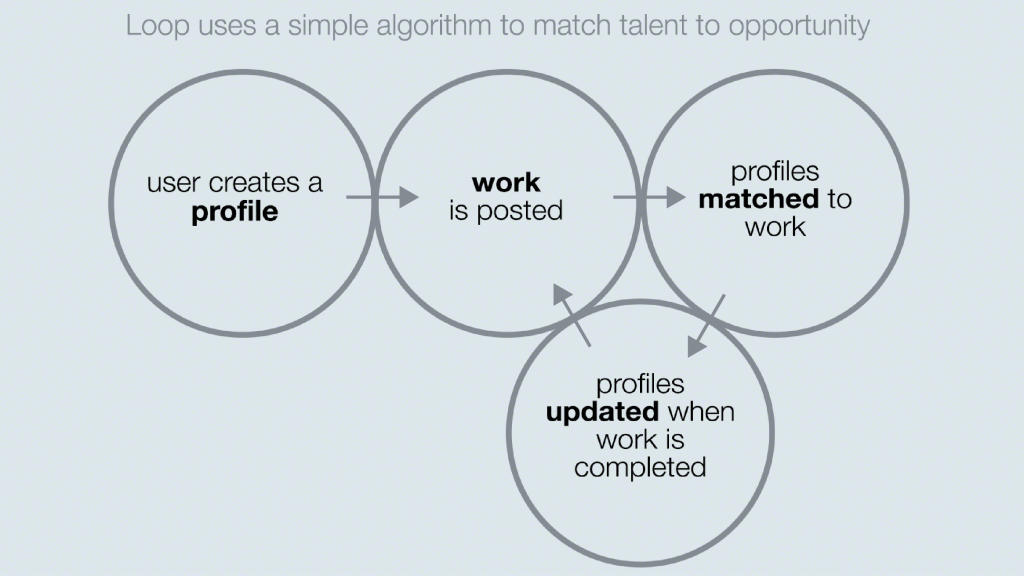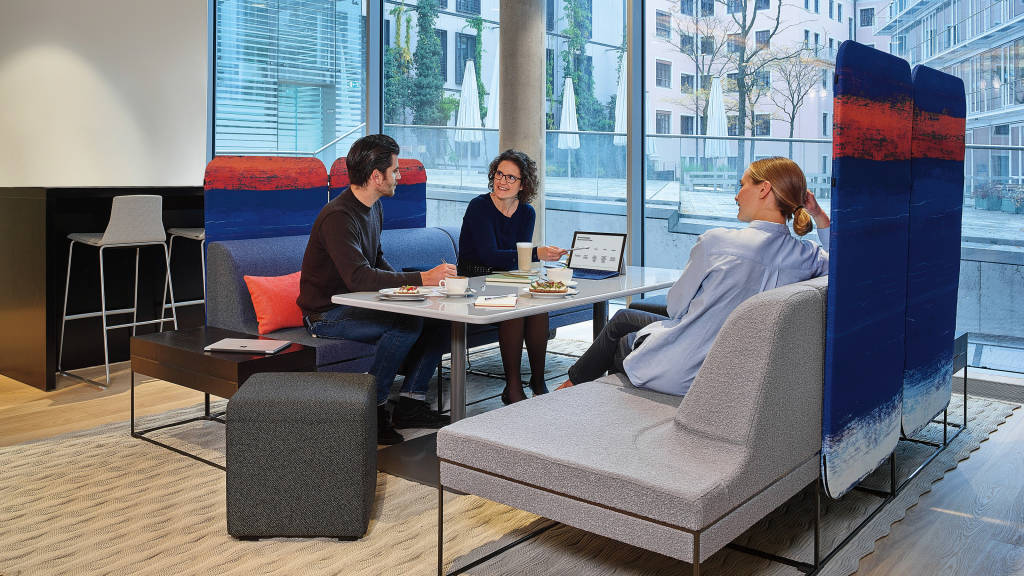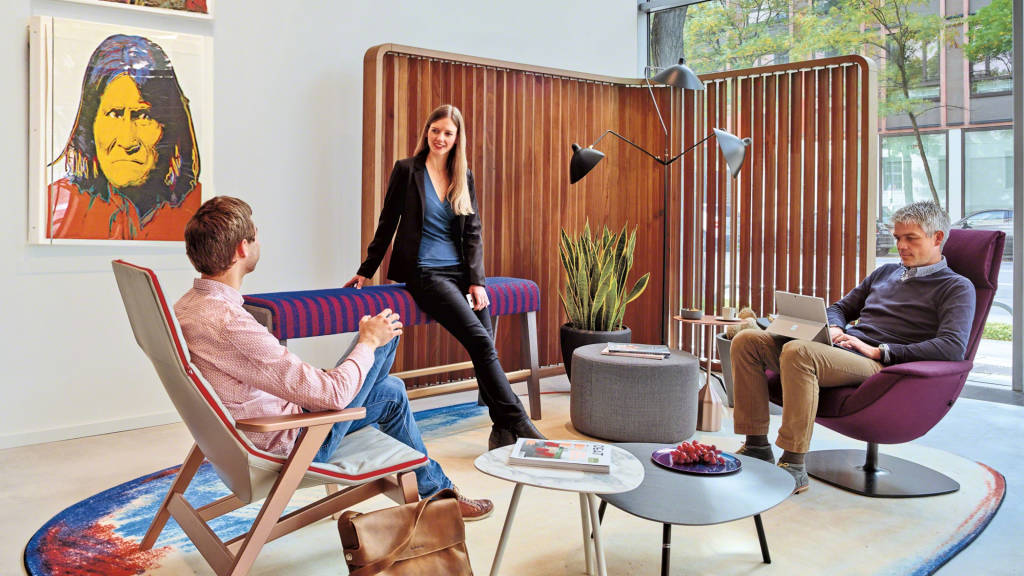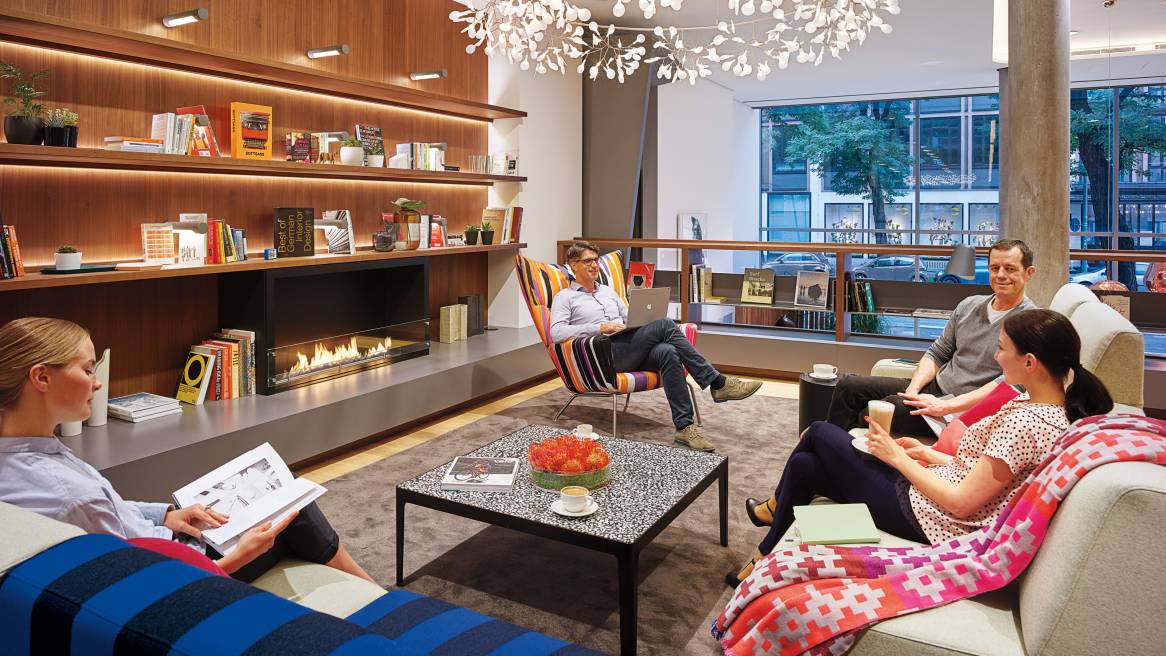In the Loop
Inside a Steelcase experiment with an internal gig economy.
Jennifer Kirby is passionate about improving the work experience for nursing mothers. As a regional applications consultant, Kirby designs spaces for a living, so it seemed natural to turn her passion into a side project redesigning mothers’ rooms for Steelcase and her clients.
“We started at a high level, thinking of how we might support the family unit and how moms and dads are impacted — postures that are more desirable, access to power, dimmable lighting and so much more,” says Kirby, who works out of the Metro DC area in the mid-Atlantic region. “Ultimately, it was about good design principles and how to empower architects and design professionals to have conversations to understand and design better environments.”
Because this project wasn’t part of their day jobs, Kirby’s team was struggling to find the time to finish. That was when she heard about the experimental Steelcase program called Loop. She wondered if it was an opportunity to bring in fresh eyes and energy to complete the project.
“Loop is one way to allow for cross-functional projects to occur. Projects that help employees share their crafts and passions, develop new skills and learn about different areas of the business. Projects that also advance the growth of our business. The magic is in presenting those opportunities more broadly,” says Jill Dark, director of leadership and organizational transformation, Steelcase.
Loop is dubbed a talent fluidity experiment. Its goal is to accelerate company and individual growth by using an algorithm to match participants’ skills with opportunities posted by project owners. Ideally, Loop helps participants gain better cross-functional literacy in the process.

“Our hope is to leverage our internal gig economy and create a self-sustaining marketplace.”
Jill Darkdirector of leadership and organizational transformation, Steelcase
We believe this is one way to increase development and engagement, build stronger networks and begin to shift our mindset from functionally owned talent to organizationally shared talent,” Dark says.
For project owners like Kirby, the program allowed her to pool resources from the larger organization, outside her team.
“I loved finding and connecting with talent from different facets of our business that I’d normally never rub elbows with. There was an excitement about working on something outside the norm – to be in areas on the fringe where it’s uncomfortable and you’re learning. That was motivating, inspiring and oh-so cool,” she says.

With Loop, Kirby’s team had six new faces from around the world.
“We were a team of misfit bandits, cross-functional and across time zones, with everybody already crunched for time,” she says.
One of the challenges they faced was juggling different schedules. Some participants were available during their lunch breaks while others had more flexibility. Despite different expectations at the outset, Kirby’s team was able to come together and advance their cause.
Within six months, they’d conducted more quantitative and qualitative research. They validated their ideas with customers and design professionals and created tools to help people understand the needs of nursing moms at work. They also populated their own thought-starters and developed and iterated prototypes of mothers’ rooms. In addition to space, their work also impacted Steelcase by influencing policies around maternity and paternity leave and what space and equipment is offered to employees and visitors.
Project participants had a warm reaction to the experiment.
“So many people told me, ‘This is exactly what I needed. I made serendipitous connections, expanded my network and had an opportunity to work on something I was really interested in.’”
Nadia Johnsonsenior consultant for strategic workforce architecture and organizational transformation, Steelcase

What interested Lavina Mahbubani, senior engineer of customer product data at Steelcase, to participate in Loop was the program’s goal of accelerating employee growth through experimental learning.
“When I signed up, I got a sense of awe. It seemed like an enriching experience. I wanted to enhance my skills, explore different areas of the business, and build up my confidence by interacting with a larger group of people beyond demographic boundaries,” she says.
Initially, she was matched to seven projects and chose three.
“All three projects were different. I learned more about tools in my region that make processes leaner and gained new perspectives working with people from completely different backgrounds. My network grew. I learned to think outside of the box and come out of my comfort zone,” Mahbubani says.
With her manager’s full support, Mahbubani was able to spend 2 hours each week on the Loop projects while also tackling her day-to-day work.
“He was very encouraging and tried to find ways to help me wherever possible while also learning something new himself. He introduced me to some new tools and helped me with my presentations,” she says. She’s excited to participate in the future and has encouraged her coworkers to do the same.

Dark and Johnson hope that the program will continue to spread and be embraced across the organization.
“At Steelcase, our employees are hungry for learning experiences, ask for development and are willing to try something new. For managers, Loop gives the opportunity to meet that demand with just a little encouragement to participate and apply the learning,” says Dark.
Jill Darkdirector of leadership and organizational transformation, Steelcase
Overall, it was clear to Dark that project owners and participants wanted exposure to different networks and teams. They noticed that the majority of participants sought out opportunities outside of their day-to-day work area, and they were motivated to work on projects aligned with their interests more often than those aligned with their skills.
Johnson says the Loop team is currently preparing for a design sprint to develop a new matching methodology to improve the Loop experience for participants and project owners.
Says Kirby, “This little project gave me a sense of purpose in helping the greater good and increasing awareness of a need. Maybe, if I spread that meaning by involving others on a fringe project that is outside their lane, they’ll grow and encourage others, and it’ll become contagious and soon we’ll have passionate people all over the world, eager to solve problems that are right in front of us. That would be the coolest thing.”
Want to learn more? Loop was recently featured in a piece by Harvard Business Review.


